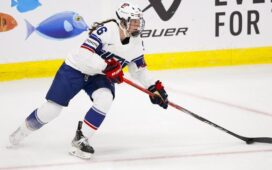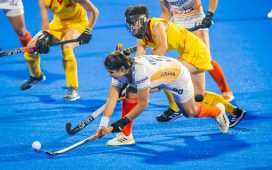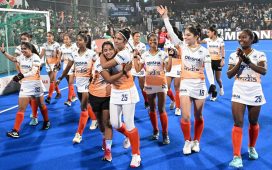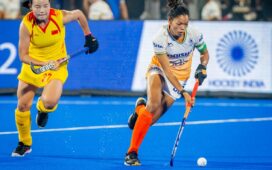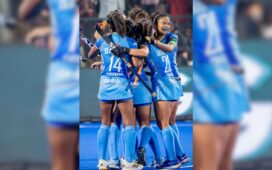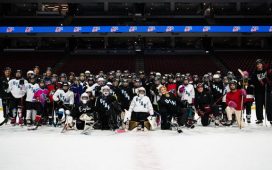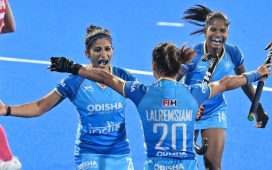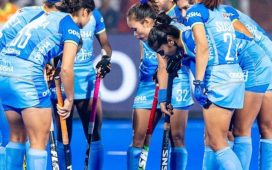It was five seasons ago that Jamie Benn stood on stage at the NHL Awards as the Art Ross Trophy winner as the league’s leading scorer, a breakout season for the winger that seemed to be his introduction into the NHL’s upper class. That it was followed by a season in which Benn toyed with winning Rocket Richard Trophy and received the third-most votes for the Hart Trophy as league MVP seemingly settled it. He was ensconced among the league’s legitimate stars.
But a peculiar thing has happened in the seasons since. His flirtation with the goal-scoring crown and MVP honor was followed by a down offensive output in 2016-17, and despite recapturing that form briefly in 2017-18, Benn’s 2018-19 campaign was one fraught with concern about his decline. He scored 27 goals and 53 points. It was his worst full-season scoring performance since his rookie campaign. Yet, there was hope coming into this season, belief that a down year could be followed by an offensive recovery, a minor resurgence similar to the one he had experienced two seasons ago.
Through 18 games, though, it’s getting increasingly difficult to maintain confidence that will be the case.
Sunday night in Winnipeg – a game in which the Stars, who had rebounded from an abysmal start to return to a .500 record, fell 3-2 to the Jets in overtime – Benn experienced arguably his worst night of the season. An early interference penalty resulted in Patrik Laine’s scoring-opening power play goal for Winnipeg, and by the time the outing concluded, Benn had mustered one shot, skated a season-low 13:03 and found himself stapled to the bench to open the extra frame, which would have been somewhat inconceivable only a few short seasons back. And now, with more than 20 percent of Dallas’ season in the books, Benn is staring down what could be the worst season of his career. His one-goal, six-point output in 18 games puts him on pace for five goals and 28 points, his 16:44 average ice time the lowest it has been since his rookie season and Jim Montgomery’s patience with his captain, it appears, is running awfully thin.
Asked post-game about the contributions the Stars have received from their top players, Montgomery didn’t hold back. According to the Dallas Morning News’ Matthew DeFranks, Montgomery said he was “very disappointed” in what he’s seen out of his big guns, and, when asked if he’s seeing progress, the Stars coach shot back with a simple, “No. Are you?”
Make no mistake, criticism of other top players is warranted, and Montgomery did lump top-line center Tyler Seguin in with Benn, according to DeFranks. The latter’s lack of production has become a far greater issue than the former’s, however. Seguin, with three goals and 11 points in 18 games, is nearly doubling up Benn on the scoresheet, and unlike Benn, who is struggling in consecutive campaigns in Montgomery’s far more defensive-minded system, Seguin is fresh off of eclipsing the 80-point plateau for the first time in five seasons. Others have succeeded offensively under Montgomery, too. Alexander Radulov posted a career-high 29 goals and 72 points, scoring at the best per-game rates of his NHL career last season. John Klingberg didn’t sputter offensively last season, either. And after a 33-point rookie campaign, sophomore defender Miro Heiskanen finds himself scoring at a 41-point clip this season.
If that’s the case, though, why hasn’t Benn been able to find similar success?
It’s a question with no easy answer and digging into Benn’s underlying numbers, it frankly gets more confounding. Consider Benn’s per-60-minute statistics, which includes his shot attempts, shots, scoring change and expected goals rates. When comparing his numbers through the first 18 games this season to those from the past two seasons, the difference is negligible, and in some cases, he’s finding opportunities this season at rates that exceed those of the past two campaigns.
To wit, Benn’s 7.6 shots at all strengths are fewer than the 8.0 and 8.9 he mustered in 2017-18 and 2018-19, respectively, but his 14 shot attempts fall in line with his 13.9 last season and 14.4 the season prior. Likewise, while his 7.8 scoring chances represent a decline from rates of 9.0 and 9.5 in the past two seasons, his 4.6 high-danger chance rate this season matches his 2017-18 rate and isn’t far off of the 4.9 he produced in 2018-19. Finally, there’s the expected goals production. In 2017-18, Benn’s rate was 1.0, declining slightly to .98 in 2018-19. This season, however, his 1.1 rate matches the second-best mark of his career. His actual goals rate, though, is a meager 0.2, far and away his worst since breaking into the NHL.
A more intriguing comparison for Benn, though, might be his current rates to those during the 2014-15 and 2015-16 campaigns, his breakout seasons. And there is a more noticeable contrast between Benn’s rates this season and those during his two most successful campaigns. In 2014-15, he produced 17.1 shot attempts, 9.3 shots, 10.8 scoring chances, 5.2 high-danger chances and 1.1 expected goals per 60 minutes at all strengths. That was followed by a 2015-16 campaign in which his respective rates were 15.8, 9.0, 10.5 and 5.6, the underlying stat-line completed with a career-best 1.2 expected goals per 60 minutes at all strengths. There are across-the-board declines that are difficult to ignore.
It doesn’t come down to rates alone, however. At the risk of oversimplifying his struggles, at a certain point Benn’s failure to find the scoresheet comes down to simple luck or the lack thereof. Despite only a slight decline in his per-game shot total, which can be attributed to ice time as much as anything else, Benn is firing blanks this season. His 2.6 shooting percentage is nearly 11 percent lower than his career rate entering this season and the worst of any forward with at least one goal and 35-plus shots this season. But it’s not just that. Benn can’t even catch a break on secondary touches. His 0.2 secondary assists per 60 minutes is the worst total of his career. Almost every puck he’s touched has died before it crosses the goal line.
Will we see a recovery this season? Possibly. Perhaps even probably. But any such resurgence would now come with enough of the season in the books that Benn will have to scratch and claw to reach the 20-goal, 40-point plateaus, which is to say he’s almost certainly destined for the worst statistical output of his career. The Stars can’t worry about that now, though. They have to simply continue to trot Benn out, give him the opportunities and hope he can work through what has become an unwelcome and extended bout of bad breaks and bounces.
Want more in-depth features, analysis and an All-Access pass to the latest content? Subscribe to The Hockey News magazine.
